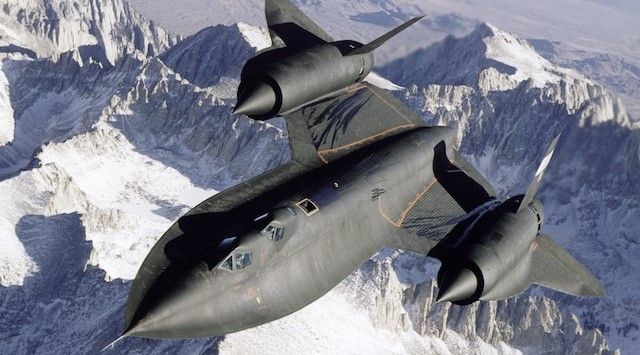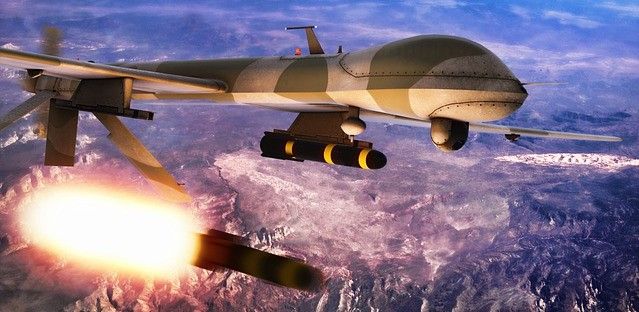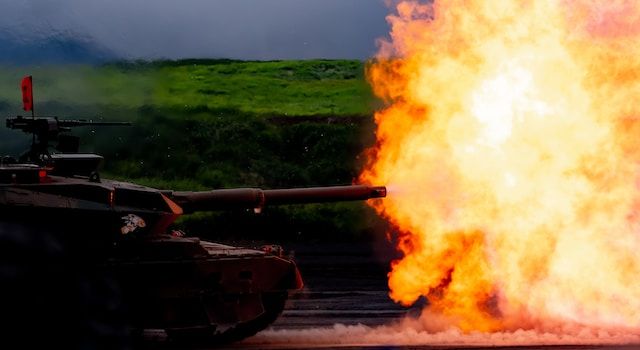Nanotechnology and Tomorrow’s Military Hardware
An exploration of how nanotechnology will influence the military hardware of the future.

At present, the main manufacturing use for a nanomaterial is to combine it with conventional raw materials and industrial feedstocks to improve or add desired properties.
This makes nanotechnology a field of great interest for researchers in the armed forces.
Nanomaterials can boost mechanical strength, impact resistance, or flexibility - ideal for use in military hardware.
Here is an exploration of ways that nanotechnology will influence military hardware in the future.
Nanotechnology and Armour
Given its exceptional strength and low weight, it is expected that nanomaterial composites will replace titanium alloys in air superiority fighters, missiles, rockets, and armoured vehicles.

Carbon nanotubes are the strongest material known to science and yet are incredibly light. They can therefore be used for structural components in military hardware as well as in shields and defensive plates.
Adaptive camouflage
The ability to mimic a chameleon or octopus and repeatedly change colour to blend into various backgrounds has always been the dream for military camouflage researchers.
In this regard, nanomaterials have shown chromogenicity. The ability to change colour following the application of external stimuli, such as light (photochromic), heat (thermochromic), electrical (electrochromic) or magnetic (magnetochromic) fields.
One example of advanced camouflage already under development is an aircraft which can project an image of the sky above onto its undercarriage. Ground observers looking at the underside of the plane can then see only a view of unbroken sky.

Colour changing paints have already been developed by the automotive industry. Getting a coating to change colour by simply applying a very low electrical charge across the surface of the vehicle. The electrical charge does not affect car performance or pose a risk to people touching the surface.
While at present the colours used are purely decorative, this is a possible route towards adaptive camouflage even if purely to change camouflage pattern loosely according to terrain and conditions (white if it snows, desert environment, etc).
Nanotechnology and Drones
It is more than twenty years since the first drone was operated by the US military in Afghanistan. Throughout that war and many others, they have been vital tools for ground reconnaissance, surveillance, delivering small payloads, and firing weapons either alone or in support of troops.

However, the major trend over the past two decades has been to make drones smaller and smaller.
Not only does this lower production costs, but it also makes them harder to detect further boosting their reconnaissance capabilities. Because of these benefits it is likely that the trend for smaller will continue.
With the application of nanotechnology, drones will further shrink in size, much the same as other electronic devices.
Smaller drones will be able to sneak into ever smaller spaces, such as buildings and trench systems, while still remaining un-detected.
By employing nanomaterials in their construction, future nano-drones will possess miniaturized GPS, antennas, and flight control systems. They will communicate through satellite systems connected to the Military Internet of Things (MIoT) giving real time information about enemy positions to support troops, tanks, and combat aircraft.

Beyond this development, and some way into the future, nano-drones (the size of a mosquito) could even be deployed for spying operations or to deliver chemical or biological agents.
While many of these applications are futuristic (and maybe unethical by today’s standards), all military concepts begin with researchers thinking ‘what if?’.
Given the speed with which nanotechnology is influencing other industries, such as the polymer sector, coating producers, electronics, communications, manufacturing, and even farming, then it is certain that military researchers are applying nanotechnology to the next war.
Photo credit: NASA on Unsplash, Sufyan, Tayeb MEZAHDIA from Pixabay, Ryoma Onita, & Pia B on Pexels

